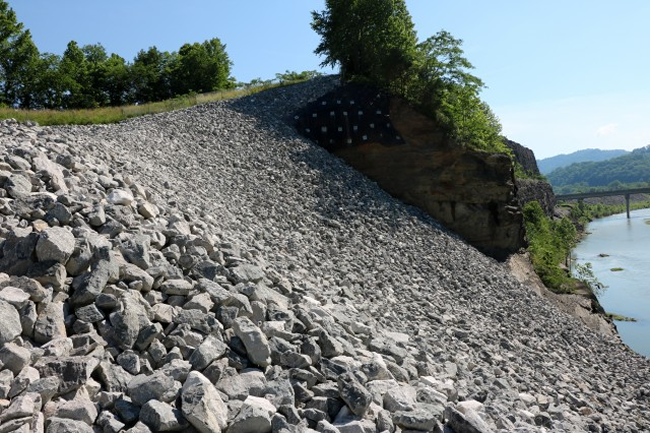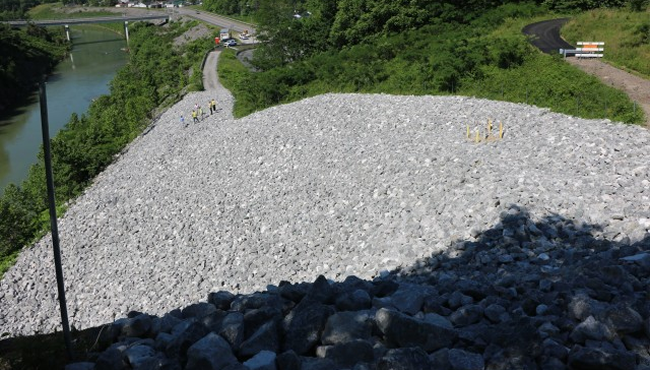On this day in history (June 11), in 1776, the Second Continental Congress formed the Committee of Five, which was charged with drafting the Declaration of Independence. The team of John Adams, Benjamin Franklin, Thomas Jefferson, Robert R. Livingston, and Roger Sherman made quick work of their committee assignment–modern committees, take note!–returning in only a couple weeks with one of the most remarkable documents in world history. Its adoption, of course, ensured that the battles that had broken out in 1775 were not just part of a rebellion but were a true American Revolutionary War.
(Odd trivia: June 11 is also the anniversary of the King and Queen of England eating hot dogs for the first time, having been served them by US President Franklin D. Roosevelt at a 1939 party.)
In a rather relevant and timely announcement, the U.S. Army Corps of Engineers Nashville District has published a note on the completion of the Loyall Slide Repair Project in Loyall, Kentucky. The Corps had completed a flood protection diversion channel below the site 21 years before. As part of the response to the now-failed slope, the crew faced the unique challenge of protecting and relocating the burial site of an American Revolutionary War veteran–one who had been part of two of the most iconic moments in the war.
How were geosynthetics involved? Geogrid reinforcement was used to repair the failed slope, though the team needed to wait on otherwise direct reinforcement work until history could be properly cared for.
MORE HISTORY: Foundation Security for UNESCO Site in Northern France
AMERICAN REVOLUTIONARY WAR MEETS GEOSYNTHETICS
The original 1999 diversion project included earthen embankments, the channel works, a floodwall, and a closure structure. A 2016 landslide at the adjacent cemetery threatened six graves. Heavy rains and poor drainage were identified as primary causes of failure.
“[We] determined that a design deficiency from unseen site conditions caused the slope failure,” writes Leon Roberts in the news announcement.
Before they could address the slope failure, however, the project team had to very carefully handle the relocation, including of the American Revolutionary War veteran.
It certainly was not a typical slope repair project.
“In November 2016, the remains of American Revolutionary War Private Samuel Howard, his wife Cloey, and baby Howard, and three other graves were exhumed,” the Corps notes.
The U.S. Army reinterred the family in May 2017 in the nearby town of Baxter. Full military honors were afforded for Private Howard.
Howard’s story is quite unique. He survived the extraordinarily difficult conditions at Valley Forge, Pennsylvania, one of the most depicted moments of the American Revolutionary War. Then, he was present in Yorktown, Virginia when British General Charles Cornwallis offered surrender to General George Washington.
The Howards were part of 67 graves that were relocated, with the Corps working alongside Brockington and Associates, a cultural resource consultant.

REPAIRING THE SLOPE FAILURE
With the graves properly handled, the slope repair works were awarded. Nearly $4 million was assigned to the repair. Kay & Kay Contracting, LLC excavated the slope in lifts while rock bolts and geogrids were used to stabilize the exposed zones. An engineered rock fill was installed against the excavated rock wall.
While the corrective actions were fairly straightforward and were wrapped up by late May 2020, the presence of so many graves requiring relocation, including that of an American Revolutionary War veteran, made it a project to remember for the US Army Corps of Engineers Nashville District Office.












